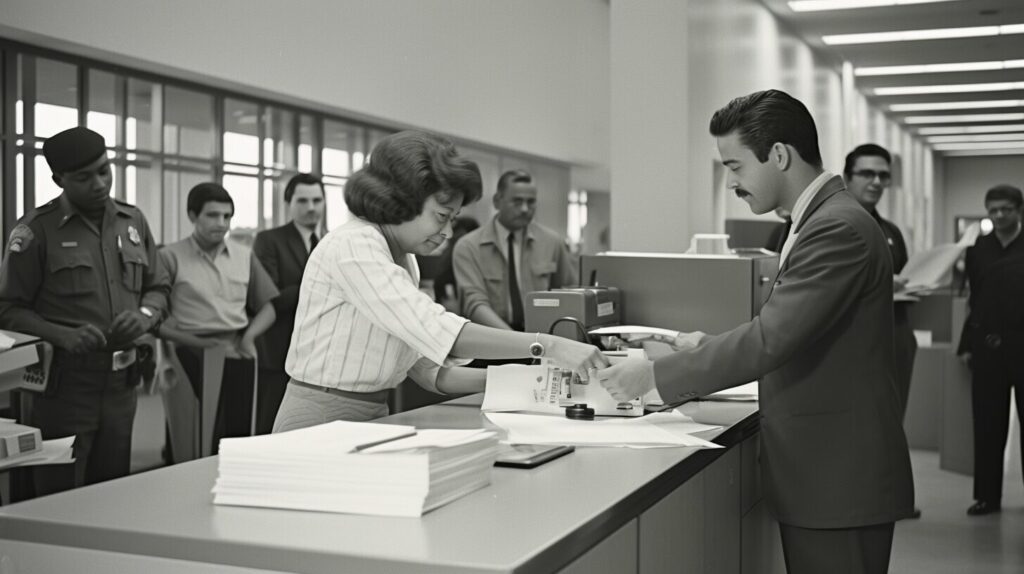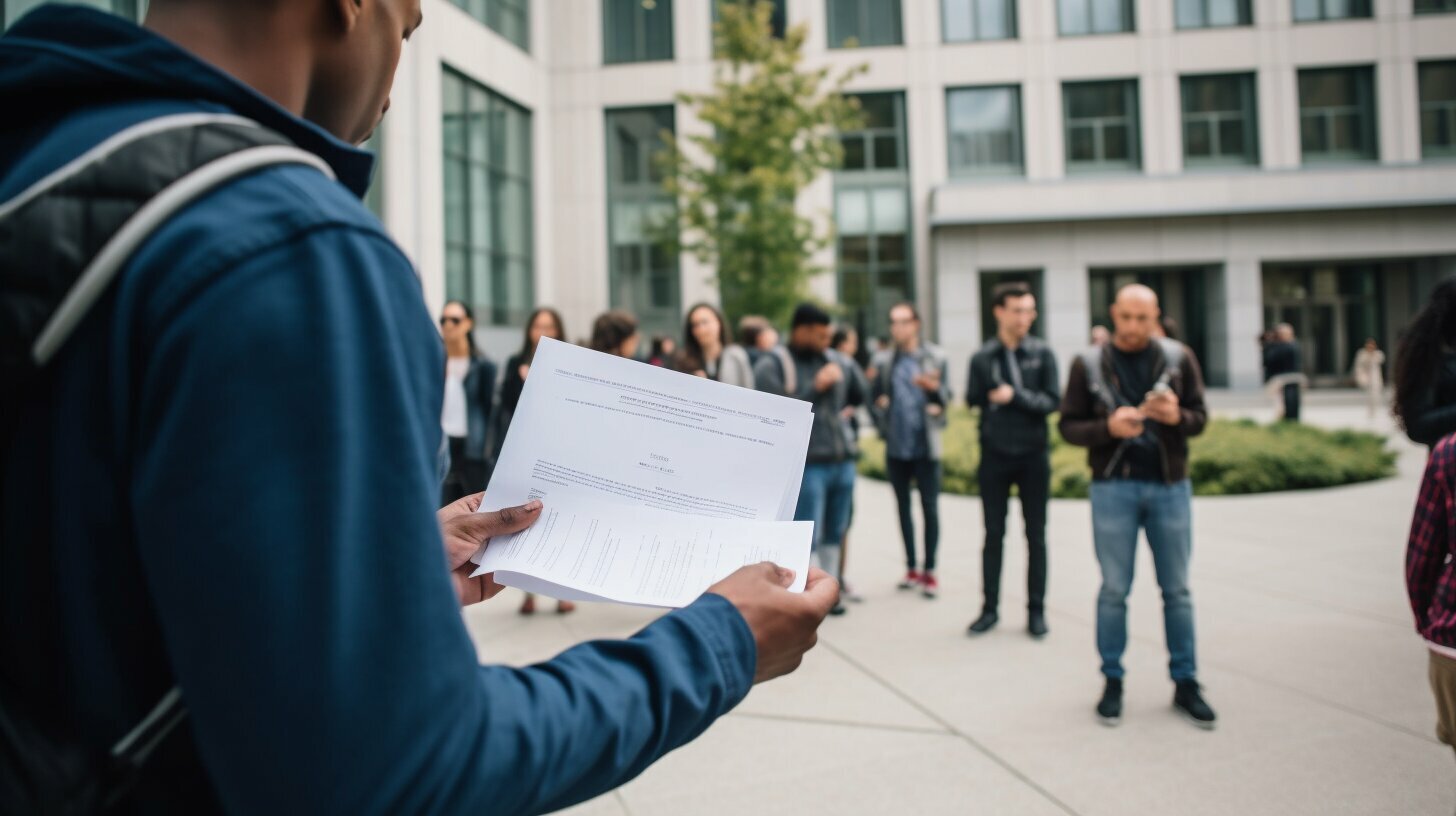If you are considering petitioning for legal custody, it’s important to understand that the process can be complex and challenging. From assessing your eligibility to presenting your case effectively in court, there are many factors to consider. In this comprehensive guide, we will provide you with practical advice on how to navigate through the legal custody petition process, step-by-step.
First and foremost, it’s important to understand what legal custody entails. Legal custody refers to the right to make decisions regarding a child’s upbringing and welfare, including education, healthcare, and religion. With legal custody, the custodial parent has the authority to make important decisions regarding the child’s life.
Before filing a legal custody petition, it’s crucial to assess your eligibility. Not everyone is eligible to petition for legal custody, and there are various factors that are considered by the courts. Gathering supporting documentation can also play a key role in strengthening your petition, so it’s important to understand what documents you may need to provide.
Consulting with a family law attorney can also provide valuable guidance throughout the legal custody petition process. They can help you draft your petition and ensure that all necessary requirements are met, as well as provide insight on how to present your case effectively in court.
Overall, petitioning for legal custody can be a challenging process, but with the right preparation and guidance, it is certainly achievable. Follow our step-by-step guide to increase your chances of a successful legal custody outcome.

- Understanding Legal Custody
- Assessing Your Eligibility for Legal Custody
- Gathering Supporting Documentation
- Seeking Legal Advice
- Drafting Your Legal Custody Petition
- Filing Your Legal Custody Petition
- Serving the Other Party
- Attending the Court Hearing for Legal Custody: What to Expect
- Presenting Your Case in Court
- Finalizing the Legal Custody Order
- Conclusion


Key Takeaways:
- Legal custody refers to the right to make decisions regarding a child’s upbringing and welfare.
- Assess your eligibility for legal custody before filing a petition.
- Gathering supporting documentation can strengthen your legal custody petition.
- Consult with a family law attorney for valuable guidance throughout the process.
- Follow our step-by-step guide for a better chance of a successful legal custody outcome.
Understanding Legal Custody
Before beginning the process of petitioning for legal custody, it is essential to have a comprehensive understanding of what legal custody involves. Legal custody gives a parent the right to make long-term decisions on behalf of a child, such as education, healthcare, and religious upbringing.
In some cases, legal custody may be awarded jointly to both parents, while in others, it may be awarded solely to one parent. It’s important to note that legal custody does not give a parent the right to physical custody of the child.
When considering legal custody, the court will always prioritize the best interests of the child. This means that the court will evaluate various factors, such as the child’s relationship with each parent, the stability of each parent’s home environment, and the willingness and ability of each parent to make decisions in the child’s best interests.
Types of Legal Custody
There are two types of legal custody: sole legal custody and joint legal custody.
| Legal Custody | Description |
|---|---|
| Sole Legal Custody | Sole legal custody gives one parent the exclusive right to make long-term decisions for the child. |
| Joint Legal Custody | Joint legal custody gives both parents the right to make long-term decisions for the child. This decision-making authority may be shared equally or allocated according to the strengths and abilities of each parent. |
If you are considering petitioning for legal custody, it’s essential to understand the different types of legal custody and which type is most appropriate for your circumstances.
By having a clear understanding of legal custody and its implications, you’ll be better equipped to approach the petition process with confidence and make informed decisions throughout the proceedings.


Assessing Your Eligibility for Legal Custody
Before petitioning for legal custody, it’s important to assess your eligibility. The court will consider various factors when making a decision on custody, including:
- The child’s age, health, and emotional needs.
- The parents’ physical and mental health.
- The parents’ ability to provide for the child’s needs, including food, clothing, shelter, and medical care.
- The child’s relationship with each parent and any siblings.
Based on these factors, the court may grant legal custody to one or both parents, or to another individual deemed suitable to provide for the child’s needs.
In order to assess your eligibility for legal custody, you should consider the following:
- Do you have a relationship with the child?
- Do you have the ability to provide for the child’s physical, emotional, and educational needs?
- Are you willing and able to provide a stable and safe environment for the child?
- Do you have any history of drug or alcohol abuse, domestic violence, or criminal activity that may negatively impact your ability to provide for the child’s needs?
It’s important to note that eligibility requirements vary by state, and consulting with a family law attorney can provide more specific guidance on your particular case.
Evidence of Eligibility
When petitioning for legal custody, you will need to provide evidence that supports your eligibility. This may include:
| Evidence | Description |
|---|---|
| Proof of relationship | If you are a family member or relative of the child, you may need to provide documentation that proves your relationship to the child, such as a birth certificate. |
| Evidence of financial stability | You may need to provide evidence that you have the financial means to provide for the child’s needs, including pay stubs, tax returns, and bank statements. |
| Character references | Providing character references from individuals who can vouch for your ability to provide for the child’s needs can strengthen your case. |
It’s important to gather all necessary documentation and evidence to support your case, as the court will carefully consider all information presented when making a decision on legal custody.
Gathering Supporting Documentation
Once you have assessed your eligibility for legal custody, it’s time to start gathering the necessary supporting documentation for your petition. This documentation will help strengthen your case and demonstrate to the court that you are capable of providing a stable and nurturing home for the child or children in question.
Some of the supporting documentation you may need to gather includes:
| Document | Description |
|---|---|
| Proof of relationship | You will need to provide evidence of your relationship to the child or children in question. This could include a birth certificate or adoption papers. |
| Evidence of stability | The court will want to see evidence that you can provide a stable living environment for the child or children. This could include proof of employment, income, and housing. |
| Evidence of ability to meet the child’s needs | You will need to demonstrate that you are capable of meeting the child’s physical, emotional, and educational needs. This could include evidence of involvement in the child’s schooling and extracurricular activities. |
| Evidence of good character | The court will want to see evidence that you are of good character and have a positive relationship with the child or children. This could include character references and evidence of involvement in the community. |
It’s essential to ensure that all of the documentation you provide is relevant, accurate, and up-to-date. Any inconsistencies or omissions could harm your case and reduce your chances of obtaining legal custody.
Remember, the more convincing your case is, the higher the likelihood that the court will grant you legal custody. Therefore, take the time to gather the necessary supporting documentation and ensure that it is correctly presented with your petition.


Seeking Legal Advice
As the legal custody petition process can be complex, it is advisable to seek legal advice. Consulting with a family law attorney is crucial to understanding your legal rights and responsibilities and ensuring that you meet the necessary requirements for petitioning for legal custody.
When seeking legal advice, it’s important to find an attorney with experience in family law and legal custody cases. Look for an attorney who is knowledgeable about the specific laws and regulations in your state.
During your initial consultation, be sure to ask the attorney about their experience and success rate in legal custody cases. You should also ask them about their fees and payment structure.
If you cannot afford an attorney, you may be eligible for free legal services through legal aid programs in your area. These programs provide legal assistance to low-income individuals and families. You can find legal aid programs in your area by visiting https://www.gov.uk/find-legal-advice.
Remember, seeking legal advice can significantly increase your chances of a successful legal custody outcome. Don’t hesitate to reach out to a qualified attorney to help guide you through the process.


Drafting Your Legal Custody Petition
Now that you have gathered the necessary supporting documentation, it’s time to draft your legal custody petition. This document is a formal request to the court to grant you legal custody of the child or children in question. It is essential to draft your petition precisely and accurately, ensuring that all required information is included.
Before you begin writing, it’s important to understand the necessary structure and formatting of the legal custody petition. Generally, the petition should have the following sections:
- Heading: This section should contain the name and address of the petitioner (you), the respondent (the other party involved), and the child or children in question.
- Introduction: In this section, you should state your relationship to the child or children and explain why you are seeking legal custody.
- Factual Allegations: Here, you should present the relevant facts that support your petition for legal custody.
- Legal Grounds: This section is where you explain the legal reasons why you should be granted legal custody.
- Prayer for Relief: This is the conclusion of your petition, where you explicitly state the relief or remedy you are seeking from the court. In this case, it would be legal custody of the child or children in question.
It is also important to follow specific formatting rules when drafting your legal custody petition. The document should be typed, double-spaced, and printed on white paper. The font should be 12-point Times New Roman, and the margins should be one inch on all sides.
When writing your petition, it’s crucial to use clear and concise language, avoiding excessive legal jargon or technical terms. Your goal is to present your case in a persuasive and effective manner. (Drafting Legal Custody Petition)
If you are having difficulty drafting your petition, it may be helpful to consult with a family law attorney. They can review your document and offer guidance on how to strengthen your case.


Filing Your Legal Custody Petition
Once you have drafted your legal custody petition, the next step is to file it with the appropriate court. Filing your petition correctly and promptly is crucial to ensure the process flows smoothly and timely.
The paperwork for filing your legal custody petition will vary depending on your jurisdiction. Most courts have online resources available to help you understand the requirements and provide the necessary forms. It’s important to carefully review the requirements and ensure that you have all the necessary paperwork before filing.
In addition to the paperwork, you will also need to pay a filing fee. The amount of the fee will also vary depending on your jurisdiction. Some courts may offer fee waiver programs for those who meet certain eligibility criteria.
When filing your legal custody petition, it’s important to follow any specific instructions or guidelines provided by the court. For example, some courts may require that you file the paperwork in person, while others may allow filing by mail or online.
Once your petition is filed, the court will assign a case number and set a date for a court hearing. It’s important to keep track of all deadlines and court dates to ensure that you are present and on time.


“Filing your legal custody petition correctly and promptly is crucial to ensure the process flows smoothly and timely.”
What happens after filing your Legal Custody Petition?
After you file your legal custody petition, you will need to serve a copy of the petition to the other party involved. Depending on your jurisdiction, this may need to be done in person by a process server or via certified mail. It is crucial that you follow the proper procedures for serving, as failure to do so can result in delays or even dismissal of your case.
Once the other party is served, they will have a certain amount of time to respond to the petition. In some states, this response is called an answer, while in others it is called a response or a motion. The response will typically include the other party’s position on the issues raised in the petition, and may also include counterclaims or requests for relief.
After the other party has responded, the court may schedule a mediation or settlement conference to attempt to resolve the issues outside of court. If the issues cannot be resolved through mediation or settlement, a court hearing will be scheduled.
Serving the Other Party
After filing your legal custody petition, you must serve a copy of it to the other party involved. Serving the petition is a crucial step in the process, as it provides the other party with notice of your application and gives them an opportunity to respond. Failure to serve the petition properly can result in delays or even having your petition dismissed by the court.
The rules for serving legal custody petitions vary depending on the jurisdiction and the court where you filed your petition. However, there are three general methods of service:
- Personal service: This involves physically handing a copy of the petition to the other party. If the other party is willing to accept the documents, it can be a straightforward method of service. However, if they’re not available or refuse to accept the documents, you may need to use a different method of service.
- Service by mail: This involves sending a copy of the petition to the other party by registered or certified mail with return receipt requested. This method is useful when you know the other party’s address, but they’re not available for personal service.
- Service by publication: This is the least common method of service and is used when the other party cannot be located. It involves publishing a notice of the legal custody petition in a newspaper where the other party is believed to reside or work.
It’s important to note that serving legal custody petitions can be emotional and stressful, especially when there are contentious custody issues at stake. If you’re unsure about how to serve the petition or need assistance, consider seeking legal advice from a family law attorney.


Attending the Court Hearing for Legal Custody: What to Expect
Attending the court hearing for your legal custody petition can be a nerve-wracking experience, but with adequate preparation, you will be better equipped to present your case and increase your chances of a successful outcome.
Preparing for the Hearing
Before the hearing, it’s essential to consult with your family law attorney to review the facts of your case, identify potential issues, and determine the appropriate evidence to present in court. Your attorney can also help you prepare your testimony and plan for any potential questioning by the judge or opposing party’s attorney.
It’s crucial to arrive at the court hearing on time, appropriately dressed, and with all the necessary paperwork, including supporting documents and copies of your legal custody petition. Bringing a notebook and pen to take notes during the hearing can also be helpful.
The Hearing Process
The court hearing process can vary depending on the jurisdiction and specific circumstances of your case. Generally, the hearing will begin with the judge reviewing each party’s legal custody petition and any supporting documents.
The judge may then ask both parties to present their case, starting with the petitioner (the person who filed the legal custody petition). When presenting your case, it’s essential to be clear, concise, and factual, avoiding emotional or inflammatory language.
During the hearing, the judge may ask questions to clarify information or seek additional details. It’s crucial to answer the judge’s questions truthfully and to the best of your knowledge.
The Decision
After hearing both parties’ arguments and reviewing the evidence presented, the judge will make a decision regarding legal custody. The judge may make a final decision at the hearing, or they may take some time to review the evidence and issue a written decision at a later date.
If the judge grants legal custody, they will issue a legal custody order outlining the terms and conditions of custody. It’s essential to review and understand the custody order thoroughly, as it will dictate each party’s legal rights and responsibilities regarding the child.


Attending the court hearing for your legal custody petition can be a challenging experience, but by preparing adequately, presenting your case effectively, and remaining respectful and professional throughout the process, you can increase your chances of a successful outcome.
Presenting Your Case in Court
Presenting your case in court is a critical step in the legal custody petition process. It’s essential to prepare thoroughly and present your case in a clear, concise, and effective manner to increase your chances of a successful outcome.
Here are some tips to help you present your case in court:
1. Dress Professionally
First impressions matter, and dressing professionally can help you make a good one. Wear clean, conservative clothing and avoid anything too casual or revealing. Your appearance should reflect your respect for the court and the importance of the matter at hand.
2. Be Prepared
Make sure you have all the necessary documentation and evidence to support your case. This includes any supporting documents you gathered in section 4 of this guide. Organize your materials in a logical order, and practice presenting your case to a friend or family member to feel more confident.
3. Speak Clearly and Confidently
Speak in a clear, confident, and respectful manner. Address the judge as “Your Honour” and avoid interrupting or speaking over anyone else in the courtroom. Be prepared to answer any questions the judge may have and stay focused on the matter at hand.
4. Present Relevant Evidence
Use relevant evidence to support your case. This includes documents, testimony from witnesses, and any other evidence that can demonstrate your suitability as a custodian. Avoid presenting irrelevant or emotional arguments that detract from your case.
5. Manage Your Emotions
Emotions can run high during legal proceedings, but it’s important to remain calm and composed. Avoid getting defensive or angry, and stick to the facts of your case. If you feel overwhelmed, take a deep breath and refocus on your presentation.


Remember, presenting your case effectively is crucial to obtaining a successful outcome. Follow these tips, prepare thoroughly, and remain calm and composed throughout the process. With the right preparation and mindset, you can increase your chances of being granted legal custody.
Finalizing the Legal Custody Order
Once the court has made a decision regarding your legal custody petition, there are several steps you need to take to finalize the legal custody order. These steps are crucial in ensuring that the legal custody order is properly implemented and enforced.
Step 1: Sign the Order
The first step in finalizing the legal custody order is to sign the order. This is typically done in front of a notary public or other authorized official to certify the authenticity of the signatures. Once the order is signed, it becomes legally binding and enforceable.
Step 2: Serve the Order
After signing the order, you will need to serve a copy of the order to the other party involved in the legal custody case. This is typically done by a process server or other authorized individual. It’s important to follow proper legal procedures when serving the order to ensure that it is properly delivered and received.
Step 3: Inform Relevant Parties
After the order has been served, it’s important to inform relevant parties about the details of the legal custody order. This includes schools, medical providers, and other individuals or organizations that may be impacted by the order.
Step 4: Follow the Terms of the Order
Once the legal custody order is in effect, it’s important to follow the terms of the order. This includes adhering to the custody and visitation schedule outlined in the order, as well as any other requirements or restrictions outlined in the order. Failure to comply with the terms of the order can result in legal consequences.
Step 5: Seek Legal Advice and Assistance
If you encounter any issues or challenges in finalizing the legal custody order, it’s important to seek legal advice and assistance. A family law attorney can help you navigate through any complex legal issues and ensure that your rights are protected.


Finalizing a legal custody order can be a complex and challenging process. However, by following the necessary steps and seeking legal advice and assistance when needed, you can ensure that the legal custody order is properly implemented and enforced.
Conclusion
petitioning for Legal Custody is a challenging process that requires proper planning, preparation, and adherence to court procedures. By following the step-by-step guide outlined in this article, you will have a better understanding of how to navigate the legal custody petition process and increase your chances of a positive outcome in court.
Remember to assess your eligibility for legal custody, gather all the relevant supporting documentation, seek legal advice, and follow the proper procedure when drafting and filing your legal custody petition.
When attending the court hearing, be well prepared, present your case confidently, and ensure that you comply with all the court requirements. Once the court has made a decision on your petition, follow up on the necessary steps to finalize the legal custody order.
Final Words
We hope that this guide has been informative, helpful, and valuable in your pursuit of legal custody. Remember to seek legal advice if you have any questions or concerns throughout the process, and stay positive and focused on achieving the best possible outcome for you and your family.



FAQ
How long does the legal custody petition process take?
The duration of the legal custody petition process can vary depending on various factors, such as the complexity of the case and the court’s caseload. It is advisable to consult with a legal professional to get a better estimate of the timeline for your specific situation.
Can I petition for legal custody if I am not a biological parent?
Yes, it is possible to petition for legal custody even if you are not a biological parent. The court will consider various factors, including your relationship with the child and the best interests of the child, when making a decision.
Do I need a lawyer to petition for legal custody?
While it is not mandatory to have a lawyer, it is highly recommended to seek legal advice when petitioning for legal custody. A family law attorney can provide guidance, help you understand the legal requirements, and ensure that your rights and interests are protected throughout the process.
What happens if the other party contests my legal custody petition?
If the other party contests your legal custody petition, the court will hold a hearing to consider both sides of the argument. It is crucial to prepare your case thoroughly, present evidence supporting your request for legal custody, and be prepared for the possibility of mediation or negotiation.
Can I modify a legal custody order after it is finalized?
In certain circumstances, it is possible to modify a legal custody order after it is finalized. However, it typically requires substantial changes in circumstances and may involve going back to court. It is advisable to consult with a lawyer if you believe modifications to the legal custody order are necessary.
What happens if the court grants me legal custody?
If the court grants you legal custody, you will have the legal right to make decisions regarding the child’s upbringing, including education, healthcare, and religious activities. You will also have the responsibility to provide for the child’s well-being and ensure their safety and welfare.





Leave a Reply